Home>Interior Design>Decorating With White: Decorate With White For A Fresh Look
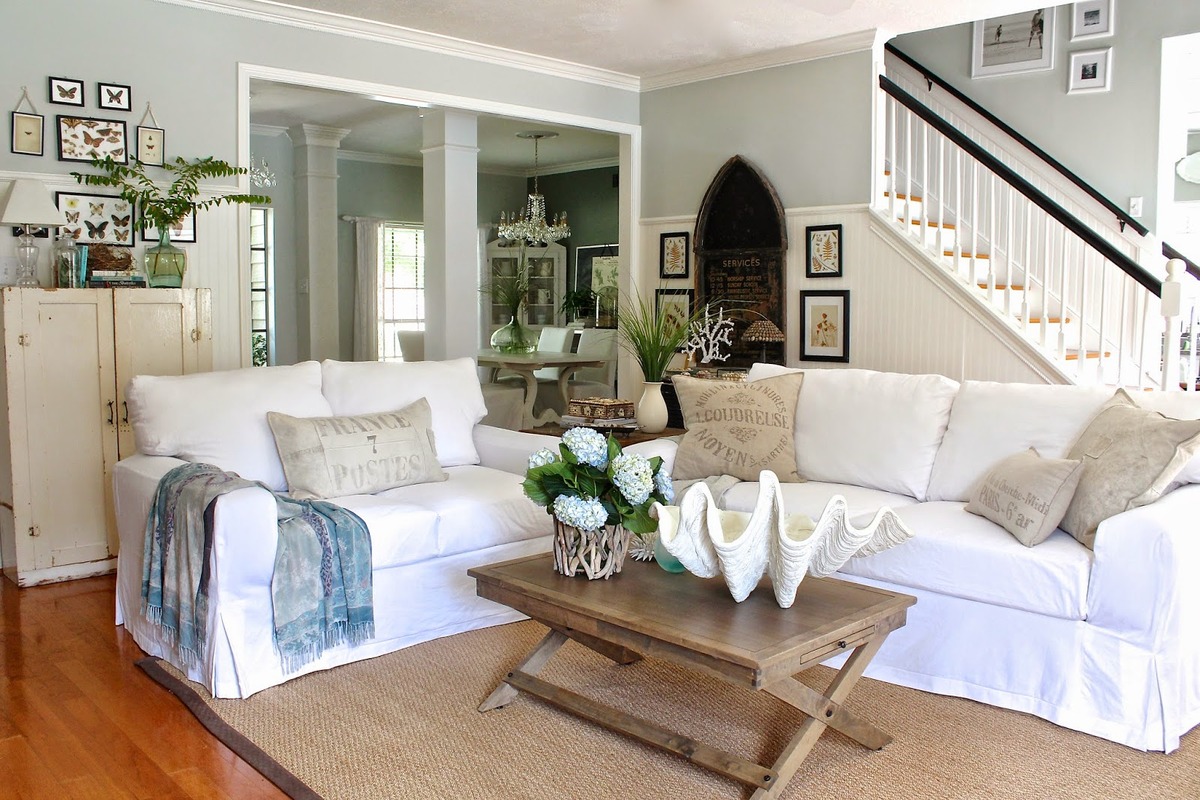

Interior Design
Decorating With White: Decorate With White For A Fresh Look
Modified: October 28, 2024
Enhance your interior design with a fresh look by decorating with white. Create a bright and inviting space that exudes elegance and sophistication.
(Many of the links in this article redirect to a specific reviewed product. Your purchase of these products through affiliate links helps to generate commission for Storables.com, at no extra cost. Learn more)
Introduction
Welcome to the world of interior design where the possibilities are endless! If you’re looking to refresh your home decor, incorporating the color white can be a game-changer. White is timeless, elegant, and versatile, making it a popular choice for many interior designers and homeowners. In this article, we will explore the benefits of decorating with white and provide you with tips on how to create a fresh and inviting space using this neutral hue.
Decorating with white offers numerous advantages that can transform your living space. Whether you’re aiming for a minimalist aesthetic, a cozy and serene atmosphere, or a chic and modern look, white can help you achieve your desired outcome. White serves as a blank canvas, allowing you to experiment with different styles, textures, and accent colors to create a personalized and visually appealing space.
As a neutral base, white provides a clean and fresh backdrop that allows other elements in the room to stand out. It reflects natural light, making a space feel larger and more open. By incorporating white walls, floors, or furniture, you can create a light and airy atmosphere that promotes a sense of calm and relaxation.
One of the key benefits of decorating with white is the ability to add texture and depth to a room. By using different shades and textures of white, you can create a visually interesting space without overwhelming the senses. Consider incorporating elements like textured fabrics, wood accents, or metallic details to add visual interest and create a harmonious balance within the room.
Contrast is another powerful tool in interior design, and white can be used to create striking contrasts within your decor. By pairing white with bold, vibrant colors, you can create a striking focal point in the room. Additionally, white can be juxtaposed with darker shades to bring depth and drama to your space. Whether it’s with black accents or deep, rich hues, the possibilities are endless when it comes to creating contrast with white.
Now that we’ve explored the benefits of decorating with white, let’s take a closer look at how you can incorporate this versatile color in different rooms throughout your home. From the living room to the bedroom, kitchen, and bathroom, white has the power to transform any space into a fresh and inviting sanctuary.
Stay tuned as we take a deeper dive into each room, exploring the various ways to decorate with white accessories, choose the right white paint, and maintain the pristine look of your white decor. Let’s get started on your journey to creating a beautiful and timeless home with the power of white!
Key Takeaways:
- Embrace the Timeless Elegance: Decorating with white offers timeless elegance, versatility, and the ability to enhance natural light, creating a fresh and inviting atmosphere in any room.
- Versatile and Fresh: White serves as a neutral base, allowing for light and airy spaces, texture and depth, striking contrasts, and a cohesive, visually appealing home decor.
Benefits of Decorating with White
Decorating with white offers a multitude of benefits that can elevate and transform your living space. Whether you’re aiming for a minimalist aesthetic, a cozy and serene atmosphere, or a chic and modern look, incorporating white into your interior design can help you achieve your desired outcome. Let’s explore some of the key benefits of decorating with white:
- Timeless Elegance: White is a classic color that never goes out of style. It exudes elegance and sophistication, giving your space a timeless appeal. Regardless of current design trends, white will always create an effortlessly chic and stylish environment.
- Versatility: White is an incredibly versatile color that can work well with a wide range of design styles. Whether your preference is modern, traditional, rustic, or eclectic, white can seamlessly integrate into any aesthetic. It serves as a neutral backdrop, allowing you to experiment with different textures, patterns, and accent colors.
- Enhanced Natural Light: White has the remarkable ability to reflect natural light, making a space appear brighter and more open. By incorporating white elements such as walls, ceilings, or furniture, you can maximize the available natural light and create an airy and inviting atmosphere.
- Illusion of Space: If you have a small or cramped room, decorating with white can visually expand the space. White reflects light, making the room appear larger and more spacious than it actually is. This makes it an excellent choice for apartments or rooms with limited square footage.
- Serenity and Calmness: White is often associated with feelings of peace, tranquility, and serenity. It creates a soothing environment that promotes relaxation and calmness. Incorporating white into your decor can help create a sanctuary where you can unwind and recharge after a long day.
- Time and Cost Efficiency: White is a practical and cost-effective choice when it comes to home decor. It is readily available and easy to find, whether you’re looking for furniture, accessories, or paint. White is also great for those who enjoy updating their decor frequently, as it serves as a versatile base that can be easily refreshed with new accent colors and accessories.
By leveraging the benefits of decorating with white, you can create a beautiful, inviting, and harmonious living space that reflects your personal style. Whether you choose to incorporate white as the main color or use it as an accent, this versatile hue has the power to elevate your home decor and create a refreshing ambiance that will be enjoyed for years to come.
Using White as a Neutral Base
When it comes to interior design, using white as a neutral base can be a game-changer. White provides a clean and fresh backdrop that allows other elements in the room to shine. Whether you’re aiming for a minimalist, contemporary, or eclectic style, incorporating white as a neutral base can help you achieve a cohesive and visually appealing look. Here are some tips on how to effectively use white as a neutral base:
- White Walls: One of the simplest ways to use white as a neutral base is by painting your walls white. White walls create a blank canvas that allows you to showcase other design elements such as furniture, artwork, and accessories. They also reflect natural light, making a room feel more spacious and airy.
- White Flooring: Another way to incorporate white as a neutral base is by opting for white flooring. Whether it’s white hardwood, tile, or laminate, white flooring adds a clean and modern touch to any space. It pairs well with a variety of color schemes and allows you to experiment with different furniture and decor styles.
- White Furniture: Choosing white furniture is an excellent way to create a neutral base in your space. Whether it’s a white sofa, dining table, or bookshelf, white furniture brings a sense of lightness and elegance to a room. It can be easily paired with other colors and patterns, allowing you to update your decor without having to change the furniture.
- White Window Treatments: Consider using white window treatments, such as curtains or blinds, to enhance the neutral base of a room. White curtains not only provide privacy and light control but also add a touch of sophistication and elegance. They can be paired with colorful accents or left alone to create a crisp and clean look.
- White Cabinetry: If you’re updating your kitchen or bathroom, white cabinetry can serve as a neutral base that complements any color scheme. White cabinets create a bright and timeless look, making your space feel clean and inviting. They can be paired with a variety of countertop materials, backsplash tiles, and hardware finishes.
When using white as a neutral base, it’s important to consider the overall color scheme and style of your space. White pairs well with almost any color, allowing you to incorporate pops of color through accessories, artwork, and textiles. Whether you prefer bold and vibrant hues or soft and muted tones, white provides a versatile backdrop that allows these colors to stand out.
Furthermore, using white as a neutral base doesn’t mean your space has to be devoid of visual interest. Incorporate different textures, patterns, and materials to add depth and dimension to your room. Consider incorporating elements such as textured pillows, patterned rugs, or metallic accents to create visual intrigue.
By utilizing white as a neutral base, you can create a harmonious and inviting space that serves as a foundation for your personal style and creativity. It provides a versatile backdrop that allows you to experiment with different colors, patterns, and styles, ensuring your decor reflects your unique preferences and personality.
Creating a Light and Airy Space
One of the advantages of decorating with white is the ability to create a light and airy space. By incorporating white elements into your interior design, you can maximize natural light, enhance the perception of space, and create a serene and inviting atmosphere. Here are some tips on how to create a light and airy space using white:
- White Walls: Painting your walls white is the first step in creating a light and airy space. White walls act as a blank canvas, reflecting light and making the room feel brighter and more open. Choose a shade of white that complements the natural light in your space, whether it’s a cool white for a north-facing room or a warmer white for a room with abundant sunlight.
- Light-Colored Flooring: Consider opting for light-colored flooring to further enhance the sense of light and airiness. Whether it’s white hardwood, light-colored carpet, or pale tiles, light-colored flooring helps brighten the room and creates a seamless flow of light. It also provides a clean and fresh backdrop for the rest of your decor.
- Ample Natural Light: Maximize natural light by allowing it to filter into the room. Avoid heavy or light-blocking window treatments and opt for sheer or light-colored curtains or blinds that let in plenty of sunlight. Remove any obstructions, such as large furniture or decor items, that may block the natural light from entering the space.
- Mirrors: Mirrors are a powerful tool in creating a light and airy space. Place mirrors strategically to reflect natural light and visually expand the room. Hang a large mirror opposite a window to bounce the light around, or use a collection of smaller mirrors to create a focal point and add dimension to the room.
- White Furniture and Accessories: Incorporate white furniture and accessories to enhance the light and airy feel of the space. White furniture blends seamlessly with the white walls, creating a cohesive and harmonious look. Additionally, choose light-colored or white textiles, such as curtains, bedding, and upholstery, to further brighten the room and create a sense of airiness.
- Minimalist Approach: Embrace a minimalist approach to keep the space feeling light and airy. Declutter and remove any unnecessary items to create a clean and open atmosphere. Choose furniture and decor pieces with sleek lines and a streamlined design to maintain an uncluttered and spacious feel.
In addition to these tips, make use of natural materials, such as light-colored wood, rattan, or linen, to further enhance the light and airy ambiance. Incorporate plants and greenery to add a touch of freshness and life to the space.
By following these guidelines, you can create a light and airy space that feels bright, open, and inviting. The use of white as a dominant color, along with strategic design choices, will ensure that your room exudes a serene and uplifting vibe that you and your guests will enjoy.
Adding Texture and Depth with White
While white is often associated with a clean and minimalist look, it doesn’t have to be boring or plain. In fact, using various shades of white and incorporating different textures can add depth and visual interest to your space. By layering textures and playing with light and shadow, you can create a sophisticated and inviting atmosphere. Here are some tips on how to add texture and depth with white:
- Mix and Match Textures: Experiment with different textures to create a visually interesting space. Combine smooth and rough textures, such as a fluffy white rug against a sleek leather sofa or a woven macrame wall hanging with a smooth white wall. Mixing textures adds dimension and creates a dynamic aesthetic.
- Layer with Fabrics: Use various fabrics to add texture and depth to your space. Incorporate fluffy white pillows, a chunky knit blanket, or a faux fur rug to create a cozy and inviting atmosphere. Curtains with a subtle texture or a white linen tablecloth can also add visual interest and dimension.
- Play with Patterns: Don’t be afraid to introduce patterns in your white decor. Whether it’s a patterned wallpaper, a geometric white tile backsplash, or a white damask pattern on pillows or upholstery, patterns can add a touch of sophistication and uniqueness to your space.
- Metallic Accents: Introduce metallic accents in shades of white, such as silver, gold, or rose gold, to add a luxurious and glamorous touch. From shiny white vases and mirrors to metallic light fixtures and accessories, these accents can enhance the depth and create a focal point in your space.
- Textures in Natural Materials: Incorporate natural materials, such as woven baskets, rattan furniture, or exposed brick walls, to bring texture into your white decor. These elements not only add depth and visual interest but also create a sense of warmth and connection with nature.
- Artwork and Sculptures: Hang white artwork or display white sculptures to add texture to your walls. Whether it’s a textured abstract painting or a sculptural piece made of ceramic or resin, these pieces can create a focal point and add depth to your white decor.
Remember that lighting plays an important role in highlighting textures. Use a combination of natural and artificial lighting to create a play of light and shadows, enhancing the texture and depth in your space. Consider adding floor or table lamps with adjustable shades or using accent lighting to highlight specific textured elements.
By incorporating a variety of textures and layering them strategically, you can add depth and visual interest to your white decor. These textural elements will create a cozy and inviting atmosphere while maintaining the clean and fresh aesthetic that white offers.
Read more: How To Paint Concrete For A Fresh Look
Creating Contrast with White
Contrast is a powerful tool in interior design, and using white as a base color allows you to create striking contrasts within your space. By juxtaposing white with other colors, materials, and textures, you can add visual interest and create a dynamic and eye-catching atmosphere. Here are some tips for creating contrast with white:
- Black and White: One of the most classic and timeless ways to create contrast with white is by pairing it with black. The combination of black and white creates a bold and sophisticated look. Use black furniture, black accents, or black-and-white patterns to add depth and drama to your space, while allowing white to serve as a bright and clean backdrop.
- Bold and Vibrant Colors: Use vibrant and bold colors to create a striking contrast with white. Whether it’s a bright red sofa, a vibrant yellow accent wall, or a pop of colorful artwork, these bold hues will stand out against a white background, creating a focal point and adding energy to your space.
- Wood Tones: Incorporate natural wood tones to create a warm and earthy contrast with white. Dark wood furniture or accents, such as a mahogany coffee table or walnut shelves, can create a beautiful juxtaposition against white walls or white furniture. This combination adds warmth, depth, and a touch of nature to your space.
- Metallic Finishes: Introduce metallic finishes like gold, silver, or bronze to create a luxurious and glamorous contrast with white. Incorporate metallic light fixtures, mirrors with metallic frames, or metallic accessories to add a touch of shine and sophistication to your white decor.
- Texture and Pattern: Contrast can also be created through texture and pattern. Incorporate textured or patterned elements in your space, such as a textured white rug, a patterned wallpaper, or a bold geometric print. These elements add visual interest and create depth against a white backdrop.
- Natural Stone: Use natural stone, such as marble or granite, to create contrast with white. Whether it’s a marble countertop in the kitchen or a granite vanity in the bathroom, the combination of white and natural stone creates a luxurious and elegant contrast that is both timeless and visually striking.
When creating contrast with white, it’s important to strike a balance. Use contrasting elements strategically, allowing them to stand out while still maintaining a cohesive and harmonious overall look. Consider the overall style and mood you want to achieve and choose contrasting elements that complement your vision.
By incorporating contrasting colors, materials, and textures, you can create a visually captivating and dynamic space. The contrast with white allows different elements to stand out, creating a focal point and adding excitement to your interior design.
Incorporate different textures and shades of white to add depth and interest to your decor. Consider using white furniture, linens, and accessories to create a clean and fresh look in any room.
Incorporating White in Different Rooms
White is a versatile color that can be incorporated into various rooms in your home, creating a fresh and inviting atmosphere. Whether you’re designing a living room, bedroom, kitchen, bathroom, or any other space, white can serve as a timeless and flexible base that allows you to experiment with different styles and color palettes. Here are some tips for incorporating white in different rooms:
- Living Room: In the living room, use white as a base color for the walls, allowing other elements like furniture and accessories to stand out. Pair white walls with comfortable white sofas or chairs and add pops of color through pillows, rugs, and artwork. Consider incorporating natural materials like wood or rattan to add warmth and texture to the space.
- Bedroom: White is often associated with a peaceful and serene ambiance, making it perfect for the bedroom. Use white bedding, curtains, and furniture to create a calming atmosphere. Add depth and visual interest by incorporating different shades of white and introducing metallic accents. Consider layering white textured throws and pillows to create a cozy and inviting haven.
- Kitchen: White kitchens are timeless and elegant. Opt for white cabinets, countertops, and backsplash tiles to create a clean and fresh look. Use white walls to reflect light and make the space feel brighter and more spacious. Consider adding contrast by incorporating black or metallic hardware and accessories. Additionally, add warmth and texture with wooden accents or a white farmhouse sink.
- Bathroom: White bathrooms exude a sense of cleanliness and tranquility. Use white tiles for the walls and floors to create a spa-like ambiance. Install white fixtures such as a white bathtub, sink, and toilet for a classic and crisp look. Add interest by incorporating different textures, such as a white subway tile accent wall or a white marble vanity top. Enhance the space with soft lighting and accessories in white or complementary shades.
- Home Office: In a home office, white can create a bright and inspiring environment. Opt for white furniture, such as a desk or shelving unit, to keep the space feeling open and organized. Choose a comfortable white chair and add pops of color through accessories like desk organizers, artwork, and plants. Make use of natural light and consider adding task lighting for optimal productivity.
- Children’s Room: White can also work well in children’s rooms, providing a versatile backdrop for creativity and playfulness. Use white walls as a blank canvas for colorful artwork, decals, or wall stickers. Incorporate white furniture with colorful accents and textiles to create a lively and vibrant space. Consider adding storage solutions in white to keep the room organized and clutter-free.
When incorporating white into different rooms, it’s important to consider the overall style and mood you want to achieve. Choose shades of white that complement other colors and materials in the room, and consider the specific needs and activities that take place in each space. With a thoughtful approach, white can transform any room into a fresh, stylish, and inviting sanctuary.
Decorating with White Accessories
When it comes to interior design, accessories play a crucial role in adding personality and style to a space. Decorating with white accessories can bring a sense of freshness, elegance, and versatility to your home decor. Whether it’s in the form of vases, pillows, candles, or decorative objects, incorporating white accessories can elevate the overall look and feel of your space. Here are some tips for decorating with white accessories:
- Vases: White vases can be a stunning centerpiece or accent in any room. Fill them with fresh flowers or foliage to add a touch of natural beauty and bring life to the space. Additionally, white vases can be used as standalone decorative objects or grouped together to create an eye-catching display.
- Pillows and Throws: One of the easiest ways to incorporate white accessories is by using white pillows and throws. They can instantly brighten up a space and add a cozy touch. Whether it’s on your sofa, bed, or chairs, white pillows and throws can be layered with different textures and patterns to create depth and visual interest.
- Candles and Candle Holders: White candles and candle holders can create a serene and inviting ambiance in any room. They add a soft and warm glow, creating a cozy atmosphere. Group white candles of different heights and sizes on a tray or in a decorative holder to create a beautiful focal point on a coffee table or a mantel.
- Artwork and Photographs: White frames can beautifully showcase your artwork and photographs. Whether it’s a black and white photograph or a colorful painting, a white frame can add a clean and timeless touch to your wall decor. Consider creating a gallery wall with a mix of white-framed art and photographs for a visually striking display.
- Tableware: White tableware, such as plates, bowls, and serving platters, can enhance your dining experience. White dishes provide a simple and elegant backdrop for your culinary creations, allowing the food to take center stage. They also offer versatility, allowing you to easily change the look with colorful linens or vibrant food presentations.
- Decorative Objects: White decorative objects are a great way to add visual interest and personality to your space. Consider incorporating white ceramics, sculptures, or figurines to create focal points or add whimsy to your decor. Grouping them on a shelf or mantel can create an artful and curated display.
When decorating with white accessories, it’s important to consider the overall color scheme and style of your space. White accessories can be used to create a cohesive and harmonious look, or they can be strategically placed to add contrast and create visual interest. Experiment with different textures, shapes, and sizes to create a well-balanced and visually pleasing arrangement.
Finally, don’t be afraid to mix and match different shades of white. There are numerous variations of white, from stark white to off-white or ivory. This can add depth and dimension to your decor, allowing different white accessories to complement each other while creating a dynamic and visually captivating space.
By incorporating white accessories into your home decor, you can bring a fresh and elegant touch to your space. Whether used as standalone statement pieces or as part of a layered and curated arrangement, white accessories have the power to elevate the overall aesthetic and create a beautiful and inviting atmosphere.
Choosing the Right White Paint
When it comes to incorporating white into your home decor, choosing the right shade of white paint is essential. The perfect white paint can set the tone for your space, providing a clean and fresh backdrop for your furnishings and accessories. However, with countless shades of white available, selecting the right one can be overwhelming. Here are some tips to help you choose the right white paint for your home:
- Consider Natural Light: The amount of natural light in your space plays a significant role in how different shades of white will appear. Rooms with ample sunlight can handle brighter and cooler whites, while rooms with limited natural light may benefit from warmer and softer whites. Pay attention to the direction your room faces and how the light changes throughout the day to select a white paint that complements the natural lighting.
- Undertones: White paints can have undertones of other colors, such as yellow, blue, or gray. Consider the overall color scheme and style of your space when choosing white paint with undertones. For a crisp and clean look, opt for whites with cooler undertones like blue or gray. If you prefer a warmer and cozier feel, choose whites with yellow or beige undertones.
- Sample and Test: Always test paint samples on your walls before committing to a specific shade of white. Paint small patches and observe how the color looks in different lighting conditions. Be sure to view the samples against your existing furniture and decor to see how they harmonize together. The way a white paint color appears on a paint swatch or in a catalog can vary significantly when applied to your walls.
- Consider the Room’s Purpose: The function of the room can influence the choice of white paint. For example, if you’re painting a kitchen, a durable and washable paint finish is recommended to handle inevitable spills and stains. In a bedroom, you may want to choose a softer and more soothing white to create a relaxing atmosphere. Consider the room’s purpose, traffic, and any specific requirements when selecting the right white paint.
- Be Mindful of Existing Elements: Consider the existing elements in your space, such as flooring, furniture, and architectural features. The white paint should complement these elements and create a cohesive look. Choose a white paint that either matches or contrasts beautifully with the existing colors and finishes in the room. Harmonizing with the overall design scheme will create a balanced and visually appealing space.
- Finish and Sheen: Finally, consider the finish and sheen of the white paint. Flat or matte finishes can help disguise imperfections on the walls and provide a more casual and relaxed look. Eggshell or satin finishes are popular for their slightly reflective and easy-to-clean properties. Semi-gloss or high-gloss finishes are more durable and add a touch of sophistication, commonly used for trim and molding.
Remember, selecting the right white paint requires careful consideration of the individual characteristics of your space and your personal preferences. Take the time to explore different options and test them in your home before making a final decision. This ensures that the chosen white paint truly enhances your space and creates the desired atmosphere.
By choosing the right white paint, you can create a visually pleasing and harmonious backdrop for your home decor, allowing other colors and elements to shine. It’s a wonderful way to achieve a fresh and timeless look that will stand the test of time.
Read more: 10 Best Kitchen Wallpaper For A Fresh Look
Maintaining a White Decor
Maintaining a white decor requires some extra care and attention, but with the right strategies, you can keep your space looking crisp and pristine. Here are some tips to help you maintain a white decor:
- Regular Cleaning: Dust and dirt can be more noticeable on white surfaces, so regular cleaning is essential. Dust furniture, shelves, and surfaces regularly using a microfiber cloth or a soft brush to prevent dirt from accumulating. Use a mild cleaning solution and a soft cloth to wipe down painted walls and clean any stains or smudges.
- Protective Measures: Consider using protective measures to prevent stains and damage. Place coasters or placemats on surfaces to protect against spills and heat marks. Use furniture protectors like felt pads on the legs of chairs and tables to prevent scratches on floors. Implement measures that minimize the risk of stains, such as removing shoes before entering and using covers on upholstery.
- Blot Stains Immediately: Accidents happen, but prompt action can prevent stains from setting in. If you spill something on your white upholstery or carpet, blot the stain gently with a clean cloth or paper towel. Avoid rubbing, as this can spread the stain. Use a recommended stain remover or a mixture of mild soap and water to treat the stain following the manufacturer’s instructions.
- Treat Yellowing: Over time, white surfaces may develop yellowing due to factors like sunlight exposure or aging. To restore the whiteness, you can try cleaning with a mixture of hydrogen peroxide and water, following the manufacturer’s instructions. For textiles, consider using a non-chlorine bleach designed for white fabrics to brighten and remove any yellowing.
- Address Scratches and Scuffs: Keep an eye out for any scratches or scuffs on white surfaces. For painted walls and furniture, touch up any noticeable marks with the same shade of white paint. For floors, consider using touch-up markers or a floor wax crayon in a matching shade to camouflage scratches. Regularly inspect and address any imperfections to maintain the pristine look.
- Consider Washable Materials: When choosing white fabrics, such as upholstery or curtains, opt for washable materials that are easy to clean. Look for fabrics that can be safely machine washed or are stain-resistant, making maintenance much simpler. Always follow the manufacturer’s instructions for cleaning to ensure the integrity of the fabric.
- Stay Organized: A clutter-free space not only looks cleaner but also makes maintenance easier. Regularly declutter and organize your white decor, finding designated places for items to minimize visual clutter. Use storage solutions like baskets, boxes, and shelves to keep items neatly stored away.
- Protect Against Fading: White can be prone to fading over time, especially in areas exposed to direct sunlight. Consider using window treatments like blinds or curtains to protect against harmful UV rays. If possible, rotate or rearrange furniture periodically to ensure even exposure to sunlight and prevent uneven fading.
Maintaining a white decor may require a little extra effort, but the results are well worth it. With proper care, your white space will stay fresh, bright, and inviting, creating a timeless and elegant atmosphere that you can enjoy for years to come.
Conclusion
Decorating with white offers a world of possibilities, allowing you to create a fresh, timeless, and inviting atmosphere in your home. Whether you’re aiming for a minimalist, modern, or classic look, incorporating white into your interior design can serve as a versatile and elegant foundation. By utilizing white as a neutral base, you can create a light and airy space, add texture and depth, create striking contrast, and transform rooms in your home into beautiful and harmonious sanctuaries.
Benefits of decorating with white include its timeless elegance, versatility, ability to enhance natural light, illusion of space, and promotion of serenity and calmness. Using white as a neutral base provides a clean and fresh backdrop that allows other elements in the room to shine, while incorporating different textures can add visual interest and depth. Furthermore, creating contrast with white can create dynamic and eye-catching spaces, and incorporating white in different rooms allows for a cohesive and visually appealing home decor.
When it comes to decorating with white accessories, vases, pillows, candles, tableware, and other decorative objects can bring a sense of freshness and elegance, while white paint provides a clean and versatile foundation for your space. Choosing the right shade of white paint requires considering factors such as natural light, undertones, existing elements, and room purpose, ensuring a harmonious and visually appealing result. Additionally, maintaining a white decor involves regular cleaning, protective measures, prompt stain treatment, addressing scratches and scuffs, using washable materials, staying organized, and protecting against fading.
In conclusion, decorating with white offers endless possibilities to create a beautiful, inviting, and timeless home. Whether you want to achieve a minimalistic look, a cozy and serene atmosphere, or a fresh and airy space, incorporating white into your interior design can help you achieve your desired aesthetic. With careful consideration of elements such as lighting, texture, contrast, and maintenance, you can create a space that reflects your personal style and provides a sanctuary to enjoy for years to come.
Frequently Asked Questions about Decorating With White: Decorate With White For A Fresh Look
Was this page helpful?
At Storables.com, we guarantee accurate and reliable information. Our content, validated by Expert Board Contributors, is crafted following stringent Editorial Policies. We're committed to providing you with well-researched, expert-backed insights for all your informational needs.



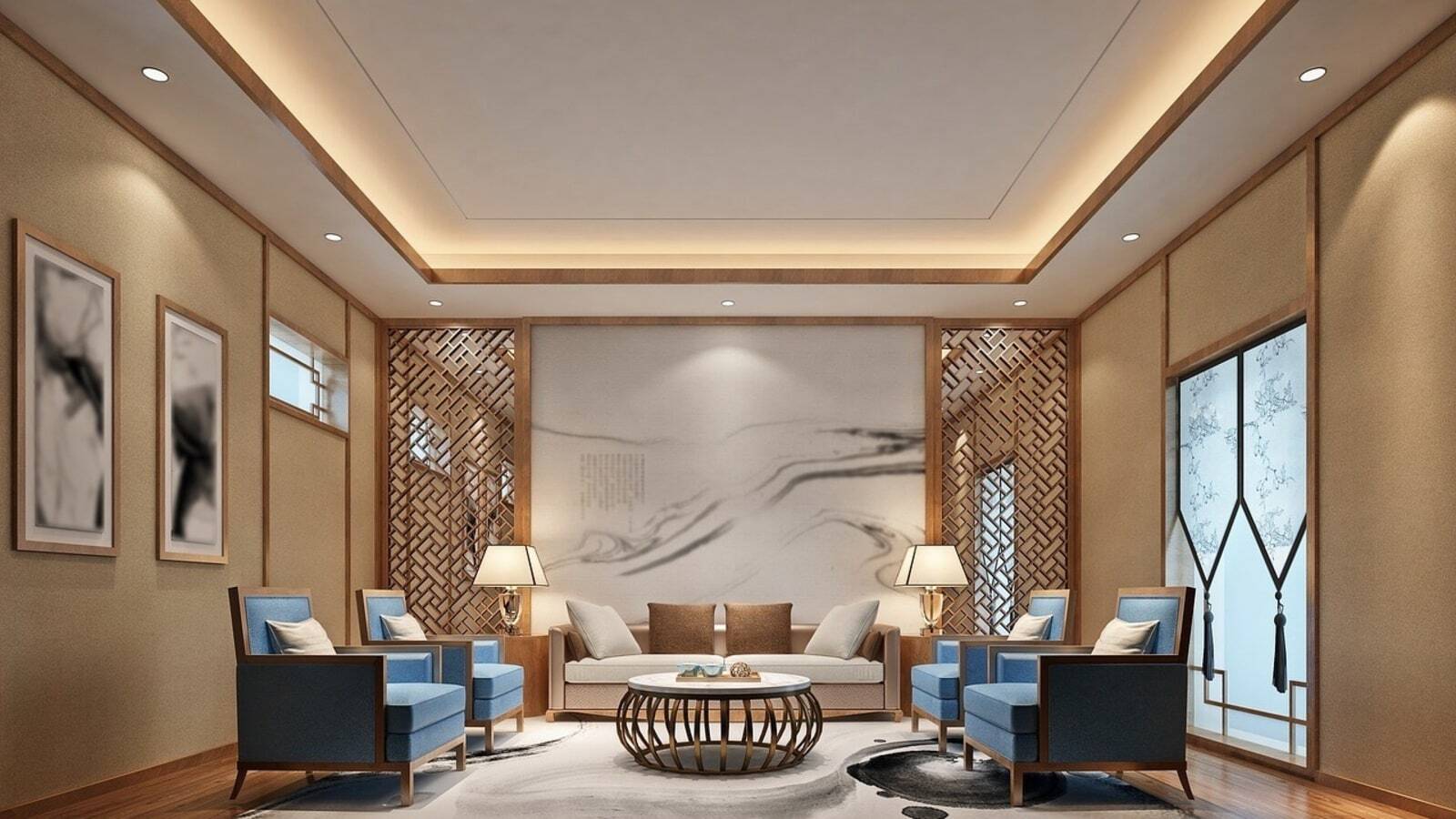

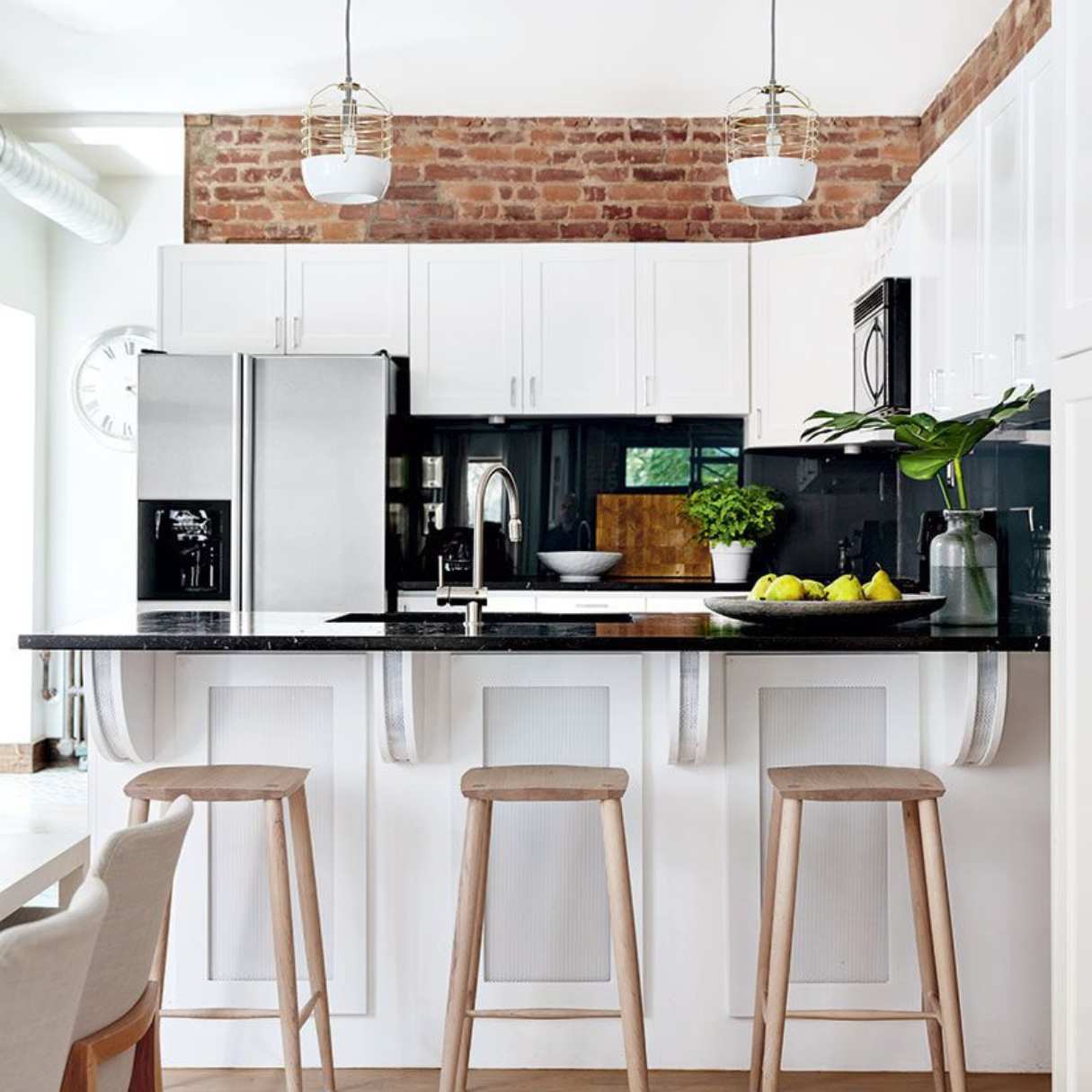



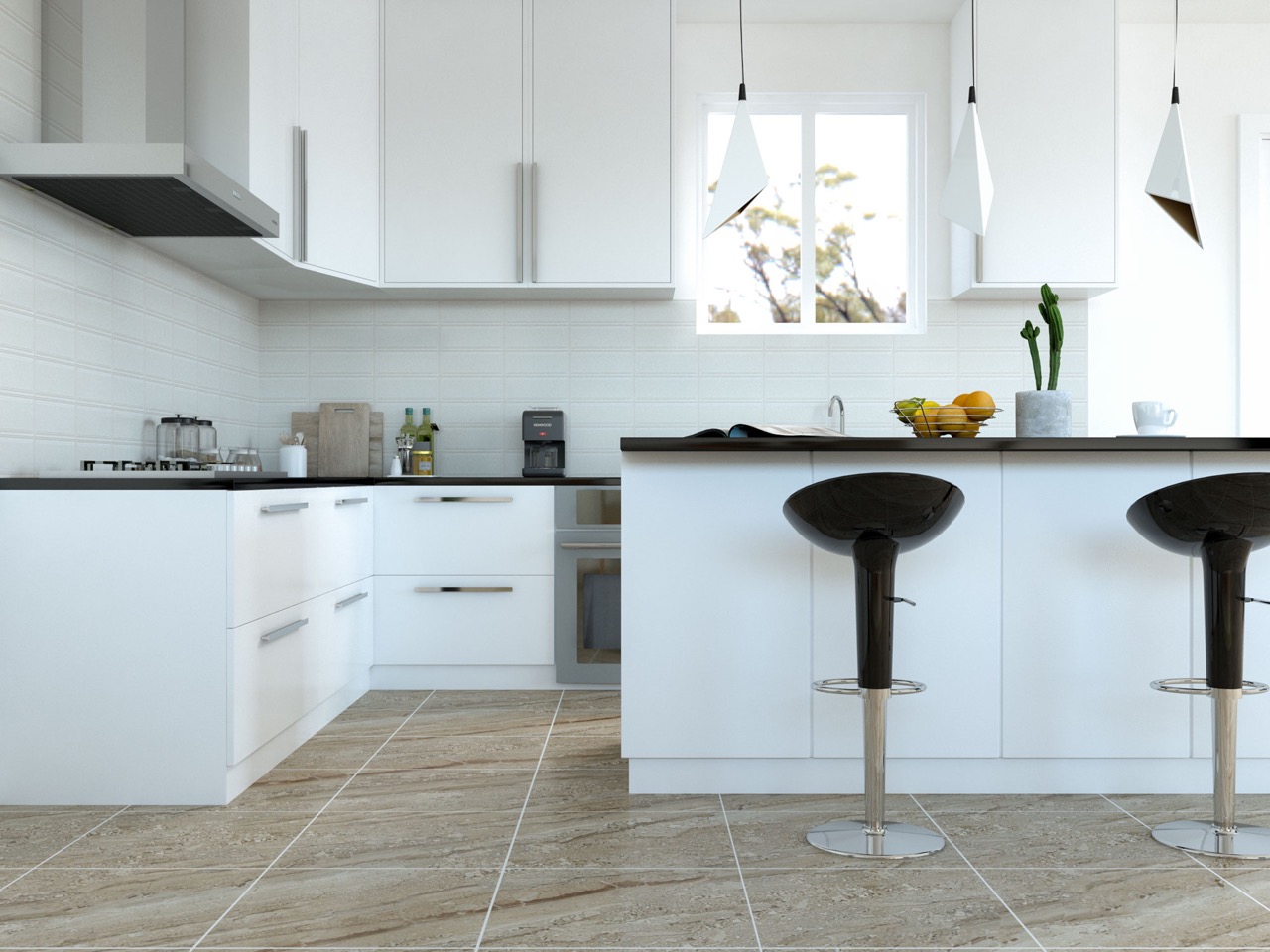
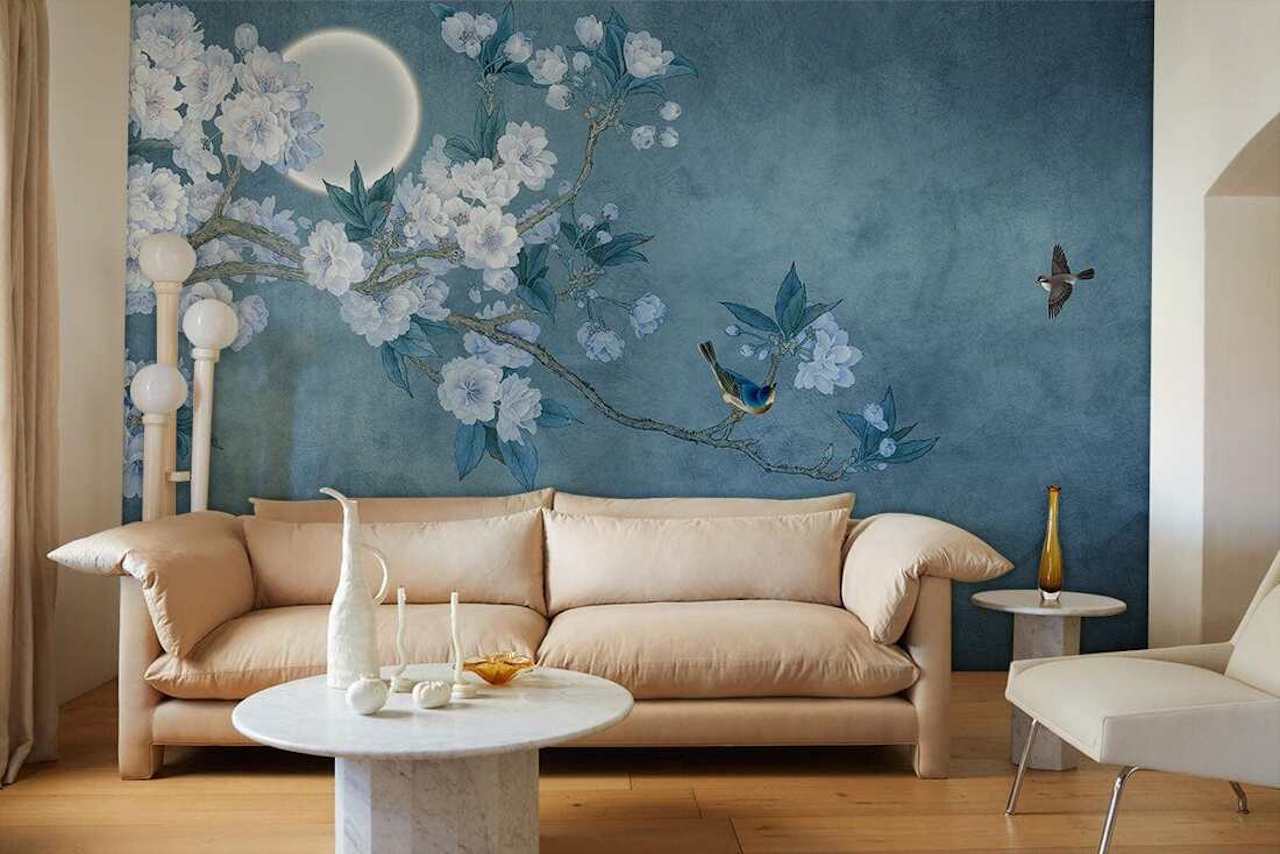
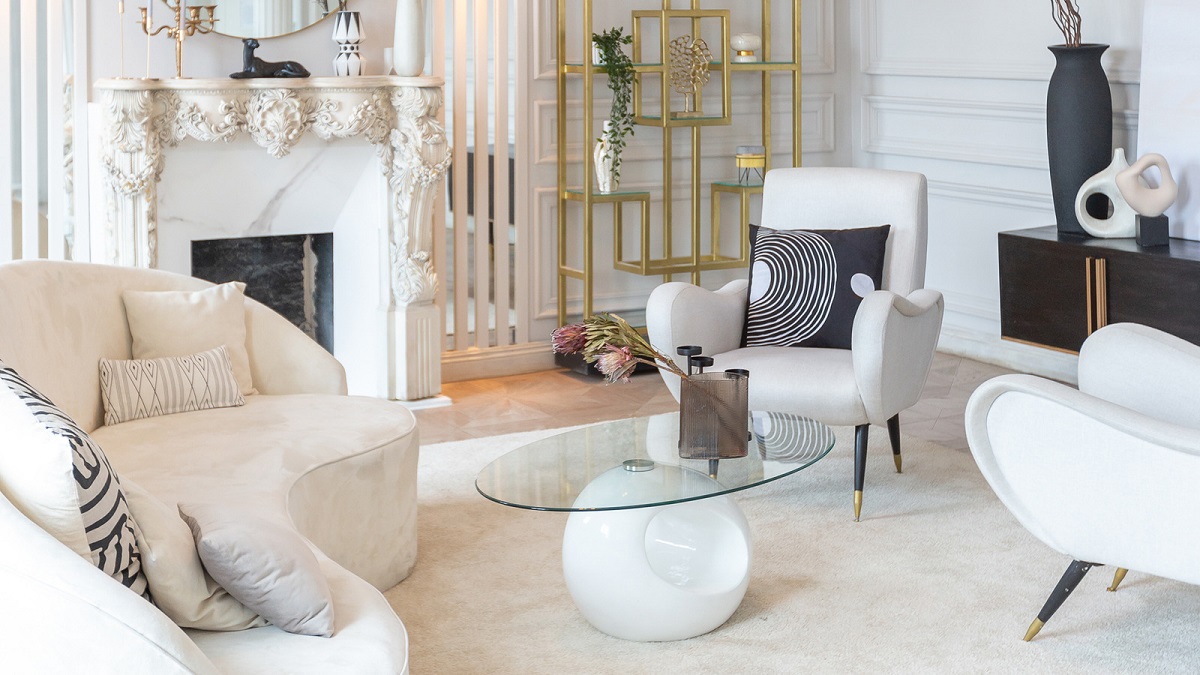
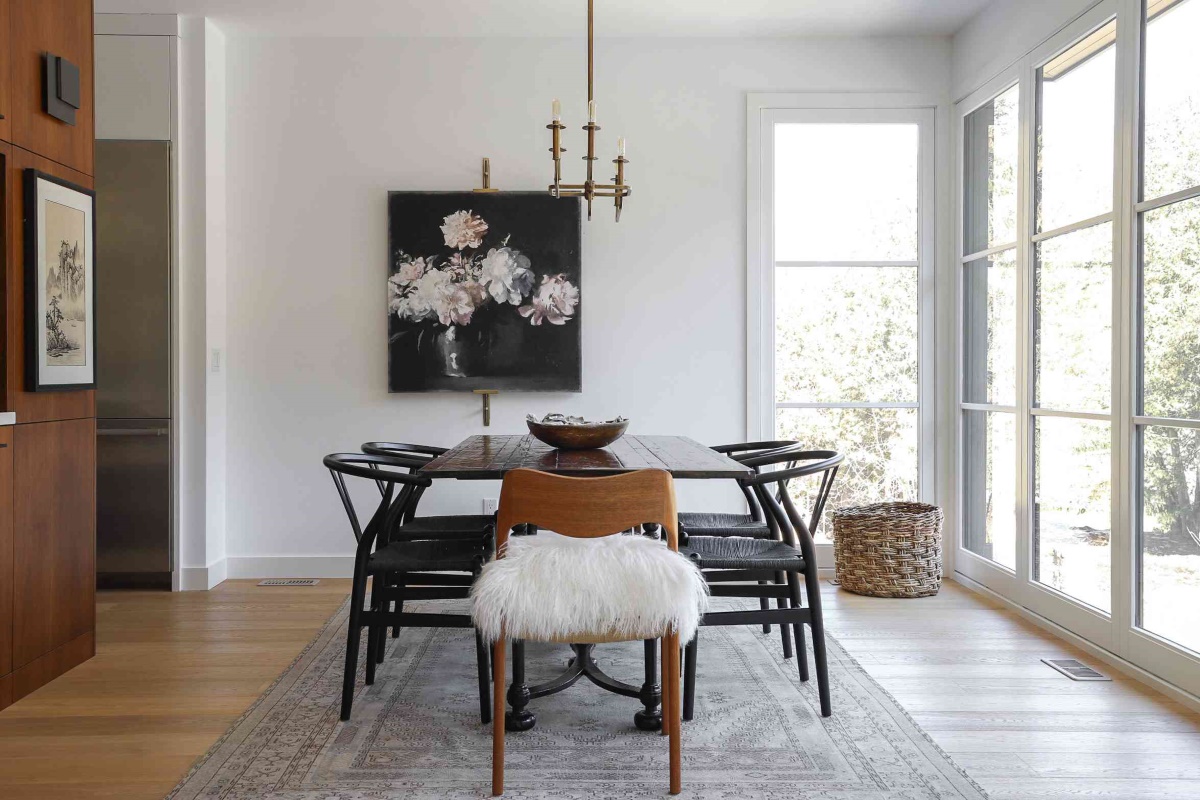

0 thoughts on “Decorating With White: Decorate With White For A Fresh Look”